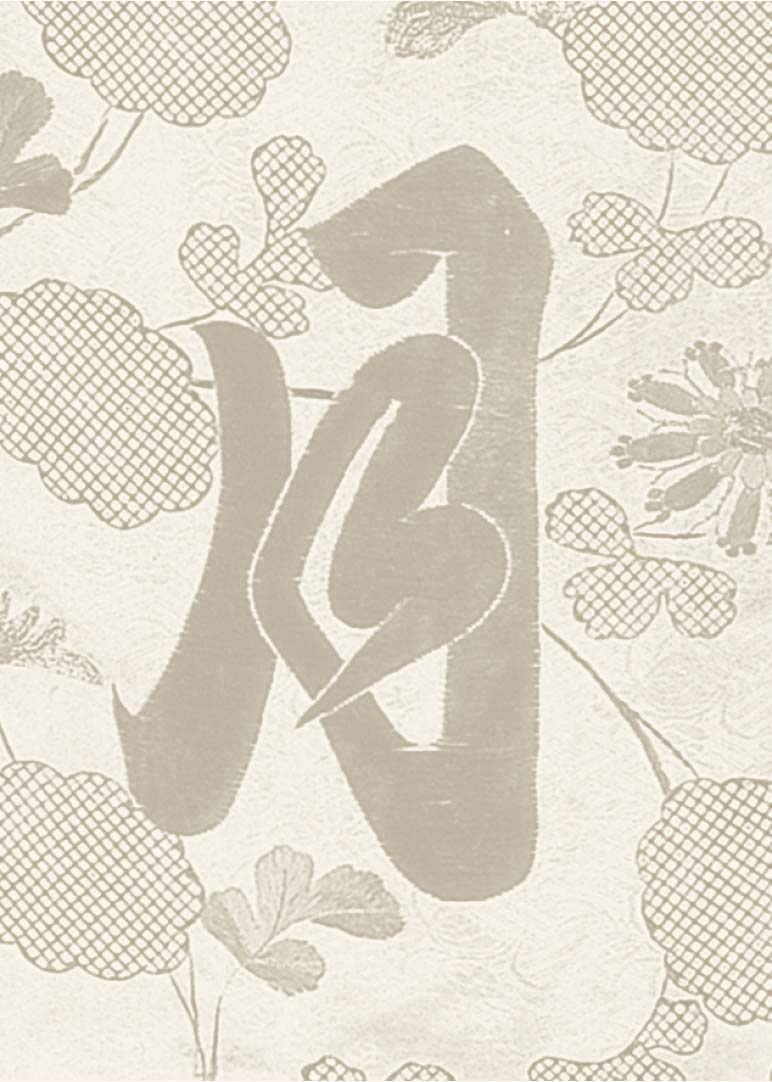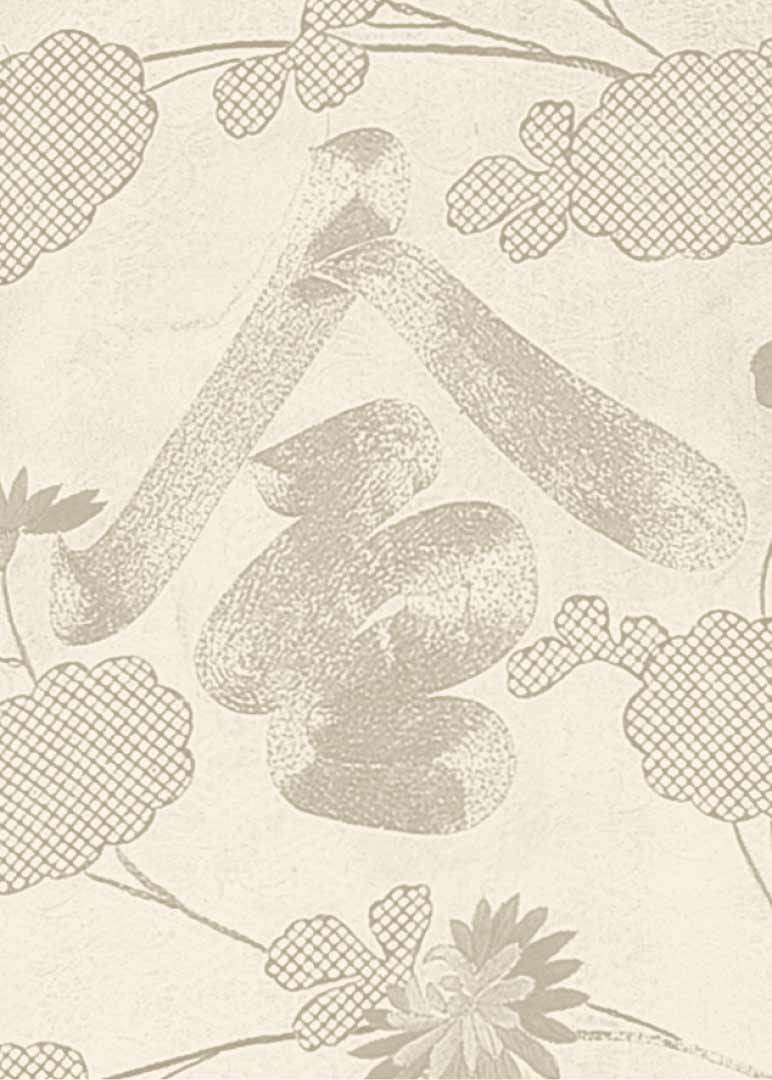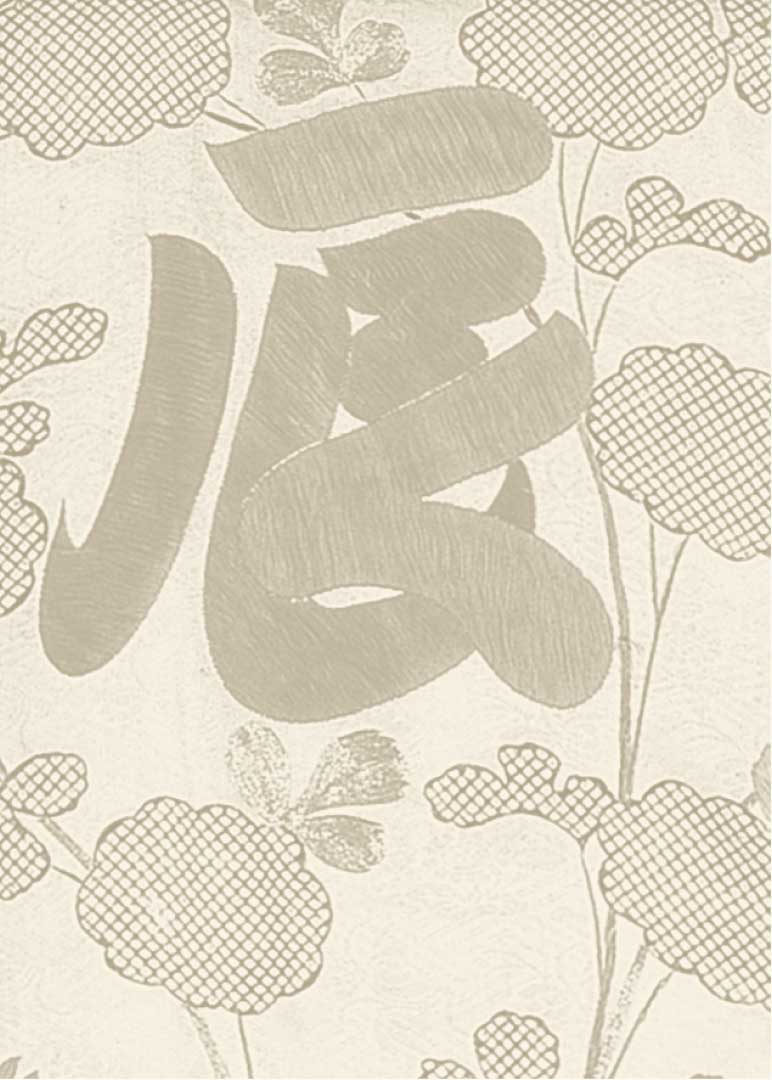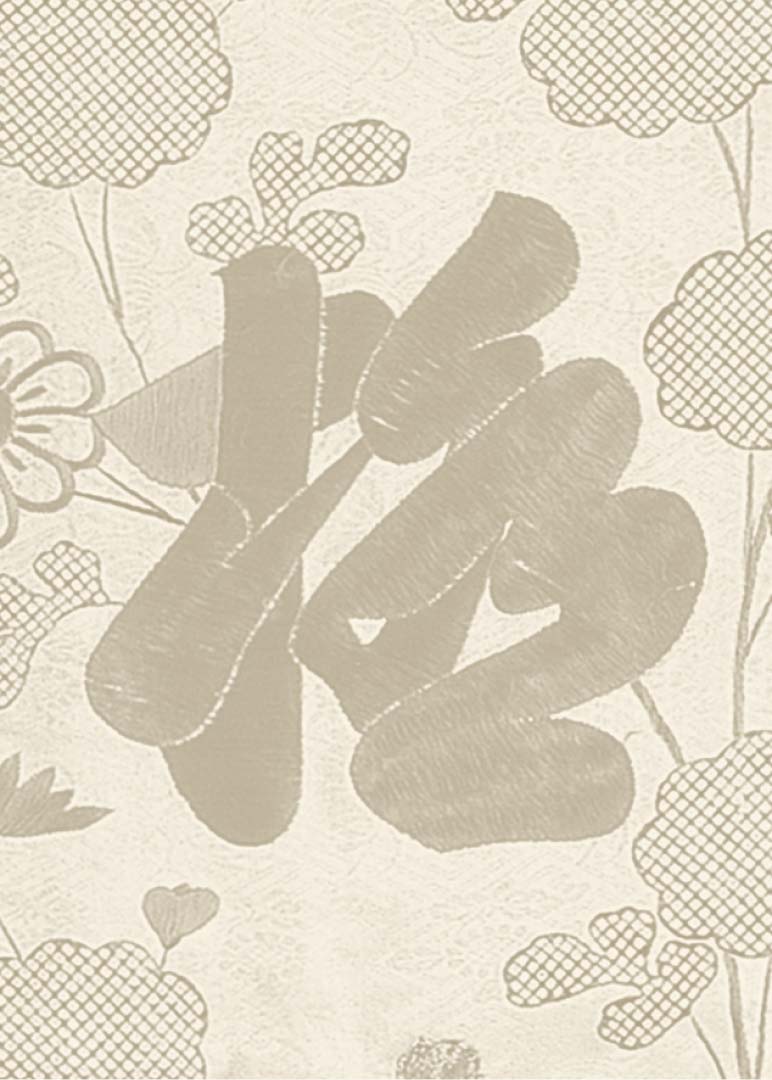Symbolism
thehe designs and motifs found in kimono decorations can have various meanings and symbolism, such as representing a family crest or specific virtues. This magnificent kosode (literally “small sleeves”), a short-sleeved kimono, features the chrysanthemum “standing tree design” (tachiki moyo) which rises from the hem to the shoulder. The background showcases imitation tie-dyeing (kata-kanoko) with embroidered red chrysanthemum blossoms. The chrysanthemum is an auspicious symbol, representing autumn, harvest, goodwill, happiness, and longevity.
About this kimono
Kimono as poetry
The bold calligraphic Chinese characters (kanji) embroidered in red and gold on the chest and shoulder sections along the back of the garment create a literary game.
On the front are the characters yorokobi (歓) and ka (嘉). On the back of the garment are the characters from right to left: kiwamari (極), shin (辰), rei (令), and getsu (月). The characters refer to the first line of the classical poem by the seventh-century Chinese poet Xie Yan, below:
嘉 辰 令 月 歓 無 極
This wonderous time, these supreme months — Joy without an end!
万 歳 千 秋 楽 未 央
Ten thousand years, a thousand autumns — Happiness that never stops.



